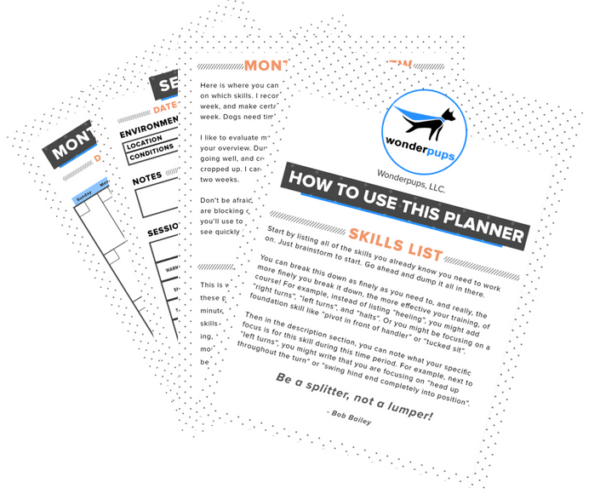It is a common misconception that clicker training, or at any rate, shaping involves a lot of standing around waiting for behavior to happen spontaneously.
But that’s not true at all! Shaping has nothing to do with “waiting”, and in fact, if you find yourself waiting more than a few seconds for the dog to make a move in the right direction, you’re probably doing something wrong.
Good shaping really has two requirements:
1. Reinforcement of successive approximations.
2. Voluntary actions from the subject.
This means the dog (or whoever is doing the learning) is initiating the behavior voluntarily and without coercion, and the trainer is reinforcing any behavior that is a piece of or takes a step closer to the desired behavior.
A good shaping session is designed to set the dog up for success by making the desired behavior very likely to occur in a very short timeframe. So, we carefully consider how we set up the environment, arrange the props, what position the handler is in, the setting of criteria, delivery of reinforcement… all to make the behavior (or piece of behavior) we want clean and easy for the dog.
When this is done well, the rate of reinforcement is very high and there shouldn’t be much at all in the way of “waiting”.
In fact, when shaping a new behavior, if my dog goes more than 5 seconds without a reinforcer, I need to stop and reevaluate. Usually, that means I need to change one of three things:
1. The set-up – How I’ve arranged the environment and relative positions of myself, the dog, and any props.
2. My criteria – What exactly I’m clicking.
3. Method of reinforcement – How or where I deliver the reinforcer.
You should absolutely shape quietly. I teach and encourage my students to avoid unnecessary talking during training as well. (As humans we have a strong urge to narrate as we go, which isn’t really helpful here.) Make sure every sound that you make is absolutely relevant to your dog, and be very conscious that anything you say or do may become part of the cue for that behavior. And while the dog is still learning the new behavior, extra talking is unlikely to be helpful information (it’s much more likely to simply be “noise” that distracts the dog from what he’s doing).
Practical Training Tip: When trying to shape your dog to interact with an object, place the object right between yourself and the dog… with as little daylight as possible. This makes interacting with the object very likely, even if by accident (doesn’t matter, it still counts!), which means you’ll have lots of behavior to click, which means a high rate of reinforcement, which means LEARNING!
So ultimately, shaping just means setting the dog up for success, breaking down the behavior, and making sure that the dog has the choice to perform the behavior (or not), and then making it very pleasant for the dog to perform it! Which is an awful lot like good dog training, no?
Links Mentioned:
